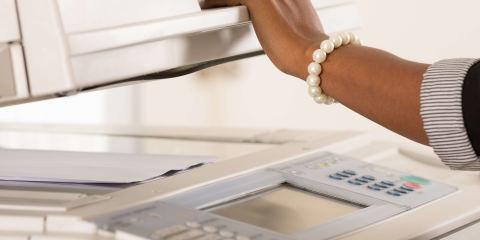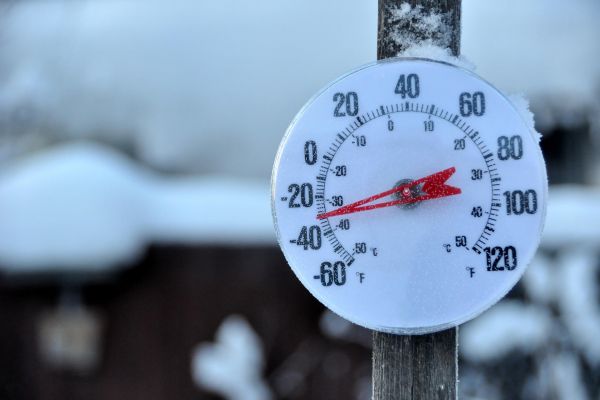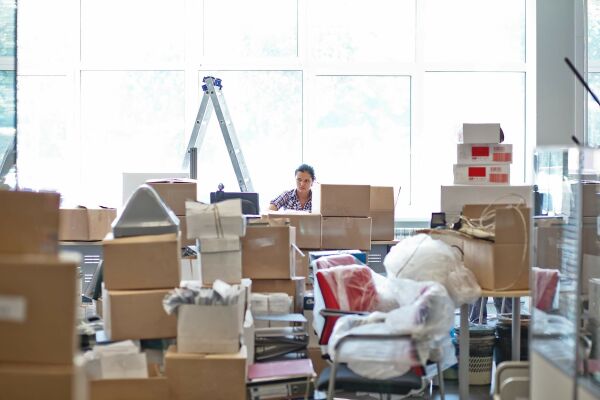If you or your company have been leasing equipment or machinery and have come to the end of your lease, or you no longer find yourself in need of it, it’s time to return your equipment.
Most companies lease at least some equipment—copiers are a common example. As the servitization model continues to gain traction, more and more equipment and hardware will be leased by companies for a variety of reasons. In this complex environment, returning your leased equipment can feel even more complicated, and the process can be especially confusing for those that are new to lease returns. Even with your lease agreement in hand, you might be wondering what exactly is expected of you throughout the return process, or how to make arrangements to safely and successfully return your borrowed equipment.
We’re here to help you unpack some of that language and figure out what exactly you need to do to get your leased equipment back on time.
First, what is servitization?
“Servitization” refers to the process of manufacturers switching from exclusively manufacturing products for sale to manufacturing and leasing, or “renting”, large pieces of equipment or machinery, such as:
- Servers
- Office equipment, such as copiers
- Medical equipment
- Construction equipment
In addition to leasing this equipment, manufacturers will typically provide ongoing services, such as preventative maintenance, monitoring, equipment customization and optimization, and customer service to help you get the most from the product.
According to Dr. Lightfoot, manager of Operations Excellence Institute at Cranfield University, and Baines et al, there are three levels of service offered under servitization:
- Base Services: The manufacturer provides a product.
- Intermediate Services: In addition to the product, the manufacturer offers product repair, maintenance, product monitoring, field service, training, and customer service.
- Advanced Services: The manufacturer also offers pay per use options, fleet management, integrated solutions, and customer support agreements.
Still confused? Think of it this way: Similar to how you would lease a car, servitization means you get the equipment for a lower cost than purchasing it outright, you can easily return or exchange it at the end of your lease agreement, and the manufacturer helps with the maintenance of the equipment you are leasing. In this case, it’s slightly more sophisticated than leasing a vehicle—you’re getting a complete solution, not just a product.
For a more detailed breakdown of ‘Servitization’, check out this video:
Ending your lease
If you no longer need the equipment you’ve borrowed once you have reached the end of your lease agreement, your next step is to contact the company you are leasing from and inform them that you have decided to return the equipment. After they have acknowledged your letter, make arrangements to ship it back following their instructions and any provisions in your original lease agreement.
| PRO TIP: When entering a lease agreement, the first thing you should do is figure out roughly how long you will need the equipment. You can always renew the agreement if you need the equipment for longer, whereas returning the equipment before the end of your lease term can result in stiff penalties for early termination, costing you more than if you simply finished out the remaining time on the agreement. |
Returning your leased equipment
In most cases, after informing the manufacturer that of your intent to return the equipment, lessees (that’s likely you) are responsible for:
- Ensuring the equipment is functional and in good working order with no excessive wear and tear, per the agreement (for example, large scratches, excessive dents, or other damage that would not happen during normal usage). This means paying for any repairs that need to be done before returning it.
- Wiping any of your private data from the equipment.
- Properly uninstalling the equipment.
- Making shipping arrangements.
- Ensuring the equipment remains undamaged throughout the removal and shipping process.
- All transportation, insurance, and shipping costs to return the leased equipment.
- Having the equipment delivered back to the manufacturer on time.
How to ship your leased equipment back to the manufacturer
Lessors (the manufacturer) typically request that the equipment be professionally prepped, packaged, and shipped with the reference number clearly visible on the outside of the package. Your lease agreement may also include additional stipulations that can be difficult to carry out without access to professional-grade packing equipment and materials, such as crating. This is why hiring a shipping company like TSI is extremely helpful and often necessary. A professional shipping company will ensure the equipment is packaged to the lessor’s specifications and that it arrives undamaged. Pros also offer expedited shipping, for situations when you have a tight turnaround time and need to get the leased equipment back quickly.
|
Need help returning your leased equipment? TSI can help you return:
Forgot your lease was reaching its end? We offer expedited shipping services, including same-day pickup. We also offer additional insurance for valuable items, and special types of trucks for fragile and sensitive equipment.. To get advice and a quote, call our logistics specialists at: 1-877-677-1571. |
Conclusion
Whether you occasionally lease equipment or take advantage of the different servitization offerings available from manufacturers, returning your borrowed equipment doesn’t have to be an overwhelming process. Make sure you:
- Ensure the equipment is in good working condition
- Wipe any of your personal data and uninstall the equipment carefully
- Hire a professional moving company to securely prep, pack, and ship the equipment per your lease agreement
- Have the made and model number of your equipment handy when you call for a quote
- Arrange to have it delivered before the date specified by the manufacturer to avoid incurring late fees
More questions about lease returns? Contact our team for answers and solutions.




